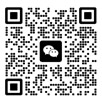【引言】在英语教学过程中,阅读占有相当重要的地位,阅读技能也被认为是最重要的语言技能之一。苏霍姆林斯基称阅读能力为“掌握知识的技能”,小学生具有了一定的阅读能力,就如同拿到了打开知识宝库的钥匙,就能通过对文质兼美的文章的阅读,受到政治思想和道德品质的教育,受到正确的科学的思想方法的训练,受到美的感染、情操的陶冶,同时也能在阅读中大量吸收语言,提高运用语言的能力。由此可见,一个人阅读能力水平的高低,往往决定了他吸收有用的信息的数量和质量。那么,如何更好地教给学生英语阅读的能力和技巧呢?我认为有三点要素:
阅读前,教会学生做足准备,以趣激读。
众所周知,好的开始是成功的一半,阅读课中的导入环节尤为重要。此环节中,我们应考虑多种形式的活动设计,充分调动学生的学习兴趣和热情,为下一步的阅读活动做足准备。阅读前,我们不应过多迂回、绕圈子,而应根据阅读材料中的话题找到学生英语学习的最近发展区,引领学生从生活走近文本。
阅读中,教会学生厘清文本的结构、理出文本的线索。
英语阅读文本,不论其内容深浅,也不论其篇幅长短,都应有着其本身的内在结构图,即有主结构与情境语之分。阅读课教学中,我们首先要教会学生厘清文本的主结构和情境语,并把主结构作为教学重点,而对于相对简单的情境语的教学,我们则可以考虑更多地放手让学生在师生或生生互动的课堂交流中习得。
任何一个文本也都会蕴涵着一条线索,或深刻、或浅显,或义理、或生活。教师应教会学生抓出文本中的这条线索,提升课堂教学品位,让一种深刻的学习体验在学生心中。
三、阅读后,教会学生运用知识与技能。
在阅读的拓展环节,我们要在学生学习文本的基础上,将学习生活回归生活实际,将英语学习活动融于真实的生活中,让学生根据生活体验表达自己的感受,使学习活动因富有生活气息而洋溢出生机和活力,呈现出语言学习活动的本真色彩。
下面且让我由一节课例谈开去,让我们用智慧教会学生解读英语文本:
【附录一】: 2013泰州市小学英语优质课展评 阅读材料
These are some English posters(招贴) from Mike’s class and Mike’s habits.
Sleep well
We need to sleep well every day. Do not eat before bed. Do not drink too much water at night. Go to bed early and get up early.
Take care of our eyes
We need to do eye exercises. Do not read on the bus, in bed or in the sun. We should not watch too much TV. We should not play computer games for hours. Our eyes need to rest.
In class and after class
You should listen carefully in class. Sometimes you need to take notes. Do your homework carefully and finish it on time. Never leave today’s work for tomorrow.
Mike’s habits
Mike listens carefully in class. Sometimes he takes notes. He always does his homework carefully and finishes it on time. Mike usually goes to bed at nine. Before bed he usually has some snacks and drinks much water. Mike has many hobbies. He likes reading storybooks, watching TV and playing computer games. He often reads on the bus. He watches TV for 30 minutes every day. He plays computer games only at weekends.
【附录二】:我的教学设计
Teaching aims :
激发学生的阅读兴趣,能通过自主阅读、师生问答、小组讨论、完成任务等活动理解文本内容。
培养学生的阅读习惯,训练学生的阅读技巧,能借助生活常识、图片,用所学词组和简单句型描述生活中好的习惯,并判断出生活中存在的不良习惯。
深化材料的内涵,把课文空间范围延伸到生活中的人和事,教会学生认识自己的生活,形成正确的观点,培养小公民道德意识。
Important and difficult points:
教学重点:理解文本内容,获取生活、学习经验。
教学难点:借助生活常识、图片,用所学词组和简单句型复述生活中存在的好、坏习惯。
Teaching steps:
Step 1 Warm up
Greetings
Sing a song
(Purpose: A good beginning is half done! To make the learning living and interesting.)
Step 2 Pre-reading
Show some signs on the screen.
(No smoking/We shouldn’t go left./ It means go straight----)
T: These rules/signs for public.
(Purpose: To activate the students and arouse them by revision of the signs)
Show the rules/signs for daily life on the screen.
It means you shouldn’t read in bed/watch TV very late/ listen carefully in class-----
(此处用可爱的课件辅助教学,如:当是正确的习惯时,用大大的笑脸;当是不正确的习惯时,用哭脸)
T: These rules are for daily life.
(Purpose: To enable the students to know some detail rules about habits, and make preparations for reading .)
Ask the students to sum up .
Ask the students to sum up the rules by themselves.
在学生总结的过程中,教师辅以课件演示如下:
Sleeping habits Eye healthy habits
Habits
Studying habits
(Purpose: To let the students summarize what have learnt just now.)
Step 3 While –reading
Learn the posters.
生自读前三段,对照文本健全和丰富posters.完成任务后,师总结
T:These posters are for my students. And I think they are also useful for you. So, remember to obey them during your daily life, that will make you healthy and improvement.
(Purpose: To make rules learning much easier by finishing the task. To let the students know something about good habits.)
Learn Mike’s habits.
(1).Skimming
Ask the students to read the text by themselves and finish the exercise: T or F.
a. Mike listens carefully in class. ( )
b. Sometimes he takes notes. ( )
c. He always does his homework carefully and finishes it on time. ( )
d. Before bed he usually has some snacks and drinks much water. ( )
e. He often reads on the bus. ( )
f. He plays computer games only at weekends. ( )
(Purpose: To get a brief understanding of the text.)
(2).Scanning
Divide the students into groups . Ask them to read the passage and try to fill in the forms in groups.
Mike’s habits
Good habits
Bad habits
(Purpose: To get the students to have some details in the text.)
Step 4.Post-reading
What can we learn from Mike?
生总结Mike 值得自己学习的地方。
2.How can we help Mike?
生总结指出Mike的坏习惯,并讨论如何帮助他改正坏习惯。
(Purpose: To train the students’ language capacity.)
3.Ask the students to discuss some proverbs either in English or in Chinese.
(Purpose: To develop the students’speaking ablity.)
Step 5. Summary
Ask the students to sum up the posters and the reading skills that used in this class.
 《中国果业信息》
《中国果业信息》 《化学工业》
《化学工业》 编辑QQ
编辑QQ  编辑联络
编辑联络 

